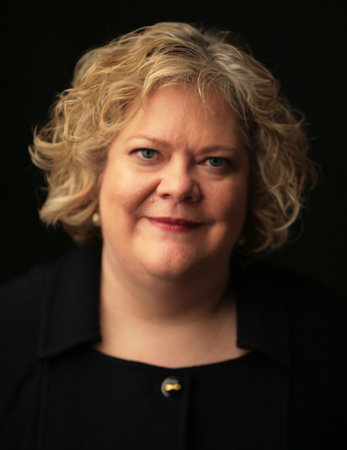Broadcast writing brings unique challenges for reporters and can, at first, seem intimidating for newcomers to branch into. In this episode, co-hosts Micki Maynard and Mark Remillard discuss successful tips and strategies for reporting business stories specifically for a broadcast audience, how that may differ from traditional print media, and how to keep all those numbers interesting to the audience on air. Whether you’re working for radio, TV, or creating your own podcast, this episode is sure to give you some practical tools to do your job well.
Transcript
[Intro Music]
Micki Maynard: How to Cover Money: Thinking like a business reporter, even when you’re not one. Welcome to the Reynolds Center podcast. We’re coming to you from the Donald W. Reynolds National Center for Business Journalism. We’re based at the Walter Cronkite School of Journalism and Mass Communication at Arizona State University. I’m Micki Maynard, Director of the Reynolds Center, and with me is my co-host, Mark Remillard. He’s a Cronkite alumni and a reporter and anchor with KTAR News in Phoenix. Hi Mark!
Remillard: Hello Micki.
Maynard: Today we bring you. Series 1, Episode 4: Translating business for broadcast.
Remillard: Yes, this is a completely different beast from writing print or writing for web copy. Writing for broadcast is a whole other ball game, so it’s important to be able to dive into some of this from a different perspective on how to cover business. So Micki, when you’re starting to do this and you’re starting to write for broadcast, what are you focusing on? Where do you begin?
Maynard: Well, I was really lucky in that my first job in journalism was actually writing radio copy for United Press International. So I learned very early that before you start writing even your first script, you have to be familiar with how broadcast stories sound. So that’s true for money topics as well. And what I would recommend for anyone listening to this that is diving into writing for broadcast is look for places like Marketplace on NPR stations or all the CNBC shows or Bloomberg Television. Listen to things like Planet Money on NPR, and listen to how those scripts sound, so that once it’s time for you to write those scripts, you have a feel for the flow of a business story on the air.
Remillard: One of the biggest differences between broadcast and print is that people can’t go back. There’s no DVR that you can go back and re-watch what someone said or a number that they threw out. So keeping it simple, in a way, is extremely important.
Maynard: Right. I think the problem with writing about business for a lot of people is that the audience finds it really hard to follow statistics and amounts of money, percentages just put people to sleep, and you have so little time to explain a story versus a print story that you really have to be judicious in what numbers you choose to put into a broadcast story.
Remillard: And I think part of it is also when you’re writing your copy, it’s just read and re-read and read and rewrite as you’re going through it, starting from the top, and keep coming down so that you’re watching it and you’re looking for any parts that are slowing it down, that are making it confusing, or that are just not clear. Because it’s hitting the listener or the viewer at such a fast pace that it has to be as as clear and concise as possible.
Maynard: The rule of thumb is that it takes three seconds for the ear to catch up with the spoken word. So if you’re giving somebody a long list of numbers, they’re going to miss one. And you know, you do want to make your listeners mad. You want to have them feel like you’ve brought them along in the story.
Remillard: One of the things that I’ve noticed when I’ve been doing business-related stories or money-related stories for broadcast is that you’re really you’re almost focusing on a different angle than you would if you were doing a print story or a web story. You are looking more for maybe a story to tell, rather than facts and figures. And that’s one thing that I’ve noticed a lot. Do you see that as well?
Maynard: One of the biggest problems, I think, in doing business for broadcast is that, you know, you can’t just read a press release. You can’t just read it the way a print reporter writes it. You actually have to go find someone who is involved in the story. And you know all those car sales stories that you’ve seen on TV where they go to a car dealership, well, you’re talking about selling cars, you have to go where they sell cars. And so that’s an extra challenge for anybody who is doing business for broadcast.
Remillard: I found that it’s it’s also helps if sometimes you point blank, when you’re dealing with someone who’s giving you a lot of numbers and a lot of facts and figures, because you might have only a short bit that you can use a sound bite for, a lot of times I ask them simply, “tie this together for me. What does this mean?” So you’ve given me all these numbers, and I might be understanding it as a reporter, but tie this together to me, because I need to have I need to hear you say it. I need you to give me the impact, I can’t present why this is important to you.
Maynard: That’s a big problem, and I always ask people to say it in plain English, and you try not to insult them, because these are experts in the field. But they also need to remember, as you’re interviewing them, that they’re speaking for a very broad audience. They’re not speaking for fellow economists. They’re speaking for our sisters and brothers and moms and dads and spouses.
Remillard: Dealing with big companies is a different animal as well. That’s something that I know you’ve done a lot a lot of coverage on. How do you deal with writing broadcast and copy for big companies?
Maynard: The first thing you have to do is describe the company, and it’s such a simple thing that so many people forget to do it. So if you’re talking about PetSmart, you want to say the national chain of stores selling everything to do with pets or Facebook, the social media company. It’s very likely there’s going to be someone in the audience who this might be a big company and it might be talked about in tech or automotive or retail, but this is the first time they’re hearing about it. So do the audience the honor of explaining to them what you’re talking about.
Remillard: I think they can also break up your copy too. As you’re writing your copy, you’re not constantly saying Facebook, Facebook. Facebook is doing this. Facebook is doing that. You know, the social media giant is doing this. You know, you can break up your copy and change it a little bit.
Maynard: And that’s one of the things that irks me a lot about broadcast interviews, especially lengthier ones, is they’ll be interviewing someone, and they don’t remind me who they’re interviewing. So I might have turned on the radio a minute into the report, and no one has told me who they’re talking to. And that’s one of the things I like about NPR, because Robert Siegel, on All Things Considered, will go in the middle of an interview and say, “Today we’re talking with Elon Musk the creator of Tesla.” And then he’ll say, “that was Elon Musk the creator of Tesla.” And so you feel like, “Oh, I was just listening to Elon Musk the creator of Tesla,” but it’s something you have to do in a broadcast piece versus a print piece. So remind them and the thing we can do with TV too is you can use a logo, you can use a photo or footage or whatever, but with radio, you have to make sure that you remind the audience who you’re talking about.
Remillard: You mentioned using logos, or when you’re talking about TV, you might be able to have photos, or you might be able to have graphics and things like that. When it comes to charts, anything like that, that you might be able to use to represent data. How do you go about that?
Maynard: Well, I get frustrated with a lot of TV now because they’ll put up a very complicated chart, and I don’t have that much time, and I might not even be watching, I might just have the TV on over in the corner. So, keep it simple when you’re talking about a chart or when you’re trying to show a statistic. I’ve learned that in giving public in public speaking, that the audience is not always staring at you or watching intently. They might be watching out of the corner of their eye. So if you have a really important point to make in a chart, make it as simple as possible.
Remillard: Kind of going along with that plain English, make sure it’s able to be understood and receive quickly and concisely.
Maynard: One trick that I’ve been taught is that you let them speak it the first time, you know, and they might might use jargon or fancy language or something like that, and then you can stop them and say, “you know, I understand what you’re talking about, but you know, my grandmother might not, or my son or daughter might not. So I wonder if you wouldn’t mind rephrasing, that as if you were speaking to a 12-year-old.” And they get it, you’re not insulting them. You’re just basically saying, “hey, the audience might not be as smart as you are. Can you say it again?”
Remillard: One of the nice things about broadcast and what you have with TV and radio is a unique format, something where you can really present either the theater of the mind in radio and present sound in audio. How do you spice up, how do you make these business stories interesting and appealing to people?
Maynard: If it’s radio in particular, you want it to come alive for people. So if you’re interviewing an executive who happens to be six-foot-four and who is bumping his head on the doorway every time he walks into his office. Tell people that. Help them get a mental picture of where you are and what you’re thinking about. And if you’re, for example, covering a picket line, and you have the sound of people maybe singing the union song, but maybe there’s a guy who’s wrapped up in a puffy coat and a scarf and gloves and a toke and he’s got heavy boots on. You want to try to work all that in so people can get a mental picture of where you’ve taken them.
Remillard: That’s it for Series 1, Episode 4 of How to Cover Money. Next time, we’ll take a look at the art of asking the good, dumb question.
Maynard: Support for our podcast comes from the Donald W. Reynolds National Center for Business Journalism. Visit our website at businessjournalism.org, you can find us on Twitter @bizjournalism. That’s at B I Z journalism. You can also look us up on Facebook, LinkedIn, and Tumblr. I’m Micki Maynard. Now, start thinking like a business reporter.
[Outro music]



